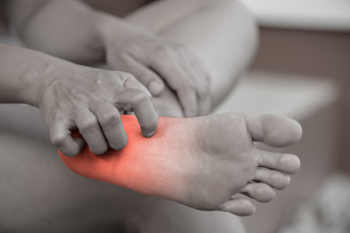
People who have heel spurs often experience pain and discomfort. A heel spur is defined as a small bony growth that develops on the back of the heel which can cause difficulty when walking. Some patients have found that performing specific stretches for heel spurs may help to restore strength and balance to the foot and ankle. This may also help the body to heal more efficiently, in addition to possibly alleviating the pain. An effective stretch for the heel is by performing heel raises. This is accomplished by standing on a step while lowering the heel until a gentle stretch is felt. Many people have succeeded in performing towel scrunches. This is done by sitting in a chair with a towel close by at the feet. As the towel is picked up with the feet, the arch can become stronger, which may provide relief to the heel. If you have developed a heel spur, it is strongly urged that you are under the care of a podiatrist who can offer proper treatment methods.
Heel spurs can be incredibly painful and sometimes may make you unable to participate in physical activities. To get medical care for your heel spurs, contact Dr. Castillo from Bronx Foot Care. Our doctor will do everything possible to treat your condition.
Heels Spurs
Heel spurs are formed by calcium deposits on the back of the foot where the heel is. This can also be caused by small fragments of bone breaking off one section of the foot, attaching onto the back of the foot. Heel spurs can also be bone growth on the back of the foot and may grow in the direction of the arch of the foot.
Older individuals usually suffer from heel spurs and pain sometimes intensifies with age. One of the main condition's spurs are related to is plantar fasciitis.
Pain
The pain associated with spurs is often because of weight placed on the feet. When someone is walking, their entire weight is concentrated on the feet. Bone spurs then have the tendency to affect other bones and tissues around the foot. As the pain continues, the feet will become tender and sensitive over time.
Treatments
There are many ways to treat heel spurs. If one is suffering from heel spurs in conjunction with pain, there are several methods for healing. Medication, surgery, and herbal care are some options.
If you have any questions feel free to contact our office located in Bronx, NY . We offer the latest in diagnostic and treatment technology to meet your needs.









